Introduction
A few weeks ago, I posted several blogs about one of the individuals involved with Jürgen Ziebell in an Irish naturalisation scheme. Johann Hans Wolpe was a Jewish financier who had left Berlin under suspicious circumstances, bumped around Paris for a few years and then ended up in Holland, from whence he was eventually deported to a concentration camp and murdered.
I had found some intriguing references to Wolpe in a book about Aleister Crowley which included an Appendix about Leon Engers Kennedy. Engers was the brother-in-law of Wolpe and Frank van Lamoen, assistant curator at Stedelijk Museum Amsterdam, had conducted extensive research into Engers life.
Lamoen noted that in 1925, Beatrice and Johann Wolpe moved their family from Berlin to Paris. That same year, Wolpe and Fritz Klekottka were accused of a swindle. In 1935, Wolpe, while living in Paris tried to sell forged shares. In 1938, Beatrice and Wolpe moved to The Hague but by 1939, the couple was divorced.
I reached out to Frank van Lamoen, who kindly shared his primary sources with me. The most helpful site was Delpher which has digitized Dutch newspapers available for viewing (free!). I sifted through the site’s newspaper archives and found dozens of articles in a number of newspapers which referenced Wolpe, Klekottka and their connection to the Barmat Scandal in Berlin. With the assistance of Deepl Translate, I’ve pieced together an overview of several aspects of Wolpe’s financial career… a career that sometimes strayed over the line into illegal activities.
Russian-German Bank for Commerce & Industry
The first mention I found of Wolpe was a 31 July 1919 Parisian newspaper which reported that a new public limited company had been founded in Berlin with a capital of 300,000 Marks, with all of the shares being kept for the founders. The founders of the Russisch-Deutsche Bank für Handel und Industrie (Russo-German Bank of Commerce & Industry) were:
- Dr. Ossip Friedlich [sic]
- Baron Arthur von Kleist
- Consul Richard Schneider
- merchant (négociant) Paul Reyer
- merchant (négociant) Johannes Wolpe.
The company’s goal was to resume commercial relations with Russia particularly with regards to grain and timber. The company operated from 1919 to 1927. The founders of the company have a couple of interesting characters and I’ll share more about them below.
Barmat Scandal
The next time we catch hold of Wolpe is in late January 1925 with the breaking of the Barmat Scandal. A Parliamentary Commission in Berlin had conducted an inquiry into the affairs of the Prussian State Bank and its clients, including the Russian-Jewish Barmat brothers. It turned out that certain officials of the State Bank and other public institutions had given, in the form of fraudulently secured credits, large amounts of public funds to “financial adventurers”. These “financial adventurers” had been recommended by prominent Social Democrats including former Chancellor Bauer.
The Barmat brothers were apparently Russian citizens who had originally entered Germany under the authority of Herr Bauer who stated that they were members of a Dutch Embassy. Later visits to Germany by some of the brothers were facilitated by President Ebert despite the fact that the German Consul General in The Hague had warned the Berlin Foreign Office about the Barmats.
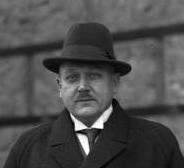
Over the next few weeks, the corruption scandal spread far and wide, and one of the primary targets was Anton Höfle, a member of the German Centre Party and minister of the Reich postal service. The Reichspost was one of the public institutions at the heart of the Barmat Scandal, which included not only the Barmat brothers but “financial adventures” such as Johann Hans Wolpe and Fritz Klekottka/Klikottka, directors of the Depositen & Handelsbank A.G.
The Depositen & Handelsbank had been founded in 1872 as the Landwirtschaftliche Kreditbank in Frankfurt a.M. and in 1912 renamed the Landwirthschaftliche Hypothekenbank. In 1916 the bank moved to Berlin and in 1922 became known as Depositen & Handelsbank A.G. The primary shareholder of the bank was Johann Hans Wolpe.
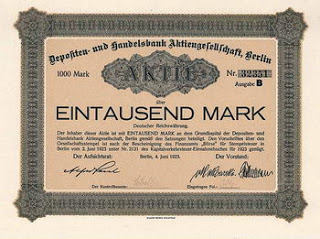
(from Freunde Historischer Wertpapiere site)
The Depositen & Handelsbank A.G. had a reputation for being a “Schieberbank”(gangster or black market bank) and was excluded from stock exchange trading and foreign exchange trading. In financial circles, the bank had a very bad reputation but in 1923, it received an official letter of recommendation, sealed and signed by Post Minister Hoefle, Transport Minister Oeser and Reich Chancellor Stresemann. The letter, published in the newspaper Vorwärts on 6 February 1925, was an application to the Stock Exchange Commissioner (Privy Councillor Lippert) and the Foreign Exchange Commissioner (Privy Councillor Fellinger) requesting that the Depositen & Handelsbank be granted admission to stock exchange trading and foreign exchange trading. Both types of trading represented great prestige in the financial world and an expressing of reliability for the business world. Both Commissioners were outraged at the recommendation and unequivocally rejected the idea. When Oeser and Stresemann understood that they had been misled by Höfle as to the true nature of the bank, they withdrew their recommendation.
Later reports noted that Herr Fleischer of the Reichstag Centre Party had written to Stresemann recommending that the bank be given the right to buy foreign currency. It was Fleischer who, in October 1923, got an agreement with Höfle whereby the Depositen & Handelsbank was given the responsibility of purchasing precious metals on behalf of the Reich, particularly the postal service and the national railways. Apparently the bank didn’t use the sums it received from the government for purchasing precious metals but turned around and lent them out at exorbitant daily interest rates, sometimes bringing in 500,000 million gold marks in daily profits. These same profits were then used to buy currencies that were then returned to the black market. This apparently came to the notice of the president of the Reichsbank who strongly objected to such dealings. In return for losing this “business”, Wolpe received the letter of recommendation from the three Reich Ministers.
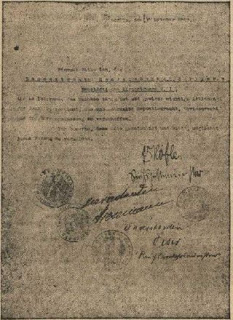
(Vorwärts – 1925 02 06 – from FES site)
The newspaper Vorwärts published the text of the letter in their 6 February 1925 edition:
Berlin, 26 October 1923
I hereby request that the
Depositen- und Handelsbank A.G.
Berlin N. 7 Neustädtische Kirchstraße 3 I,
which acts in the interest of the Reich and undertakes certain important actions for the same, to procure the unlimited right of deposit, foreign exchange law and stock exchange admission.
I note that haste is necessary and I ask you to avoid any delay as far as possible.
[Postmark of the Minister of the Posts of the Reich]
Dr. Höfle, Reichspost Minister
[Stamp of the Imperial Chancellor]
agreed
Stresemann
[Stamp of the Reich Minister of Transportation]
agreed
Oeser, Reich Transport Minister
Within two weeks however, after the protests of the stock exchange and foreign exchange commissioners, Stresemann and Oeser withdrew their support for the letter of recommendation. Höfle, however, was not so far-sighted. He decided to extend millions in unsecured credit to the Depositen & Handelsbank from the coffers of the Reichspost. After receiving 5 million Marks in one lump sum, Wolpe and Klekottka absconded with the funds, departing Berlin and leaving no forwarding address.
Several newspapers reported that the men had fled to Amsterdam and London. The German authorities began an investigation and the two men were being prosecuted by letters of intent. The scandal raised many questions, primary among them was how 5 million Marks from the Reichspost could be paid into the pockets of fraudsters without the necessary co-signature of the Secretary of State and the ministerial director. The investigation was hampered by the fact that when Wolpe and Klekottka fled abroad, they destroyed most of the bank’s books.
One Dutch newspaper noted that Wolpe had previously tried to set up a mediation office for the commercial representation of the Russian-Soviet delegation in Berlin. Apparently nothing came of it, however, since Wolpe had apparently tried to bribe a large number of civil servants in the housing agency of Berlin-Wilmersdorf. This may be connected with the Russian-German bank for Commerce and Industry.
The Depositen & Handels Bank was not the only institution sucked into the Barmat Scandal. A French newspaper noted on 8 February 1925 that Reich Attorney General was initiating proceedings against the Deutsche Kredit und Grundstücksgesellschaft, a Berlin-Wilmersdorf printing house and West Textil Fabrik. Both institutions had fraudulently obtained credits from the Reichspost treasury which had suffered a total loss of 60 million gold marks.
Barmat Scandal Prosecutions
In addition to initiating proceedings against the “financial adventurers”, the attorney general also began proceedings against Höfle and the Berlin Police Commissioner, a man named Richter. The police commissioner had apparently been involved with the Barmat brothers and granted residence permits to the three at the recommendation of former Treasury Minister Bauer. Höfle had apparently received 50,000 Marks from the Depositen & Handels Bank. It wasn’t a pretty picture and the right-wing political parties had a field day claiming that democracy was rampant with corruption thanks to the Social Democrats. Höfle was a relatively young man (43 years old) who had had an impressive career but he told one friend, “I know that I am a lost man”. Höfle was arrested and held in preventitive detention while the prosecutors conducted their investigation.
As for Klekottka, he had apparently fled to London and, from that place of relative safety, wrote a letter to a Dutch newspaper, denying responsibility for the scandal. He stated that he was only co-director of the Depositen & Handels Bank for severn weeks in November and December 1923. He said that he immediately saw that the bank’s practices were contrary to his principles and resigned. He claimed that an accusation had never been made against him and that he never intended to flee.
By the end of April, the case of Wolpe and Klekottka was still simmering. The prosecution had attempted to get the two men to return to Germany, by offering safe conduct in exchange for their testimony, but neither man took up the offer. In the meantime, more evidence had come to light against the two men and the prosecution was continuing their investigation.
Towards the end of December 1926, Wolpe’s name bubbled to the surface again, this time in the case of Justice Inspector Rossel and his secretary Pahlke. For years, the two men had been systematically eliminating procedural acts, requests for revision, etc from the files of the Moabit Court in return for payment. On 21 December, the Dutch newspaper Nieuwe Rotterdamsche Courant said it had become clear that Rossel was involved in the case of banker Wolpe who had mysteriously escaped prosecution a few years earlier.
It’s a bit of a tangled tale and it would appear that both Wolpe and Klekottka escaped prosecution. The newspaper Vorwärts has a brief mention of Wolpe still being in Paris in 1931, apparently still involved with financial activities. The Barmat brothers were eventually found guilty of corruption (influencing politicians and bribing officials). One brother received 11 months while another brother received 6 months. As for the Reichspost Minister Anton Höfle, he committed suicide while in preventive detention in prison on 20 April 1925.
Counterfeit Shares
In early 1935, Wolpe’s name was again in the news in Holland.
In December 1934, Amsterdam police had broken up a ring of fraudsters who had tried to introduce 200 false shares of the H.V.A. (Handelsvereeniging Amsterdam – Trade Association of Amsterdam) into circulation. The ring included four individuals:
- a Dutchman Bouis Paardekoper
- a German named Adler
- a Russian named Wulff
- a Russian named Wolpe
Apparently the men had crafted counterfeit H.V.A. shares which they had offered to a securities commissioner. The shares were valued at 150,000 Guilders but the fraudsters had tried to sell them for 70,000 Guilders. The commissioner notified the police who arranged a sting operation in which the commissioner pretended to be interested in purchasing the shares. The commissioner met with Paardekoper and Wulff, and when the deal was done, the police swept in and handcuffed the two men. The other members of the ring, Adler and Wolpe, were both in Paris and could not be brought to justice due to the refusal of the French police to cooperate. Paardekoper and Wulff were both tried in Holland. Wulff’s defence was that he didn’t know the poor reputation of Adler and Wolpe and had simply taken up with the wrong company. Wulff and Paardekoper were sentenced to three and two years in prison but appealed their sentences, unsuccessfully.
Wolpe appears to have led a rather charmed existence, dabbling in various fraudulent financial endeavours and always, somehow, managing to escape justice. One can easily see, however, why his wife might have decided that she had had enough of his shady career and why their marriage ended in divorce. Wolpe would not, however, escape the clutches of Nazi Germany, being sent to Auschwitz in 1944.
As always, I am intrigued by the side stories of other individuals and did a bit of digging into Wolpe’s financial associates.
Friedrich (Fritz) Klekottka
It’s hard to say if Klekottka was as innocent as he claimed to be in his letter to the Dutch newspaper. Did he only serve as a director for the Depositen und Handels Bank for seven weeks? Did the entire 5 million Marks go with Wolpe? Klekottka isn’t that common a surname, so one would think that he would be relatively easy to track but such is not the case.
Several of the 1925 newspapers noted that Klekottka had fled to London and I did find a marriage registration from 1924 in which one Fritz Klekottka married one Emmy Rusag in London. The genealogy sites only provided the marriage indices, so acquiring the actual marriage registration would cost a bit of money. But it might confirm the names of his parents which would either confirm or deny that the following reference is our man.
On 1 July 1952, one Friedrich Klekottka passed away of a heart attack in Frankfurt a.M. This individual had been born 24 September 1895 in Sanien, near Lyck in East Prussia (now Zanie near Ełk, in northeastern Poland). His parents were Johann Klekottka and Luise Kieragga. Klekottka had married Alwine Wilhelmine Maria Luise Ursula von Heyden on 17 December 1937 in Berlin. Klekottka was a director but it does not say of what. It is hard to say if this is the same Klekottka who married Emmy Rusag in London in 1924…
There is also a Fritz Klekottka showing up in the Essen-Mühlheim address books from 1927 to 1937 but this individual is a Bergman (miner) and is unlikely to be our friend the bank director.
Dr. Ossip Friedlieb Kahn Solhdoost
One of the founders of the Russisch-Deutsche Bank für Handel und Industrie (Russo-German Bank of Commerce & Industry) was Dr. Ossip Friedlieb. This individual does appear in the 1920 Berlin address books as a “Dr. Jur., Bankdirekt.” who lived in Berlin-Wilmersdorf at Wittelsbacherstrasse 18. This would seem to indicate that he was a lawyer as well as a bank director, likely of the Russisch-Deutsche Bank noted above.
Ossip also appears in numerous passenger lists between Europe and the USA in the 1920s and 1930s, as well as border crossings between Mexico and the USA. It is from these that we can begin to stitch together a picture of Ossip. His last name is sometimes given as Friedlich but this appears to be a transcription error of Friedlieb. He sometimes adds Solhdoost to his surname, particularly in the early 1930s when he applied for US naturalisation.
Ossip was an ethnic German born 18 July 1881 in Pahlevi, Persia who possessed Persian nationality and traveled on a Persian passport. A few records state he was born in St. Petersburg, Russia, but these may be transcription errors as he was often traveling with his wife, Raissa, who was born in St. Petersburg on 25 November 1892.
Ossip and Raissa were married on 8 Janaury 1911 in St. Petersburg. The couple had four daughters, all born in Russia:
- Kira – born 21 February 1913 in Russia
- Anna – born 4 April 1915 in Russia
- Marian – born 23 December 1917 in Russia
- Galina – born 23 December 1917 in Russia
It is likely that the family fled the Russian Revolution and made their way to Berlin. We know that Ossip was listed as a founder of the Russian-German bank in 1919 and that he was listed as living in Berlin in 1920. By the late 1920s, Ossip and his family were still living in Berlin, this time at Achenbachstrasse 13 in Spandau. Ossip was a banker who often travelled to the USA for business with the Relay Motors Export corporation of New York. He appears to have been a linguist, able to speak Spanish, German, English and French.
A few years later, it appears that Friedlieb was back in Iran, for some of his US visas were issued in Tehran. His closest living relative in Iran was a cousin, Ali Husein Kachef, living in Tehran. In 1932, Ossip entered the US and applied for naturalisation. The naturalisation form provided an excellent synopsis of Ossip and his family. According to the form, Ossip Friedlieb Kahn Sochdoost [sic] was the vice president of the Persian-American Trading Corporation. His two oldest daughters (Kira and Anna) were living in New York while the younger twins (Marian and Galina) were living in Germany. It doesn’t appear that Ossip and his family ever completed their US naturalisation, or that they were rejected.
On 19 May 1937, Kira Friedlieb-Solhdoolst [sic] sailed from Cherbourg, France, arriving in New York on 24 May 1937. Kira was 25 years old and visiting a friend, Ms. Young in New York. Kira was of Iranian race and nationality and her closed contact in Iran was her father, F. Solhdoosv [sic], living at Ave. Pahlev in Teheran.
In 1939, Ossip travelled to England and by 1941 appeared to have a residence in Kensington, London. Whether he and his family spent the war in England is unknown. We lose the traces of most of the family.
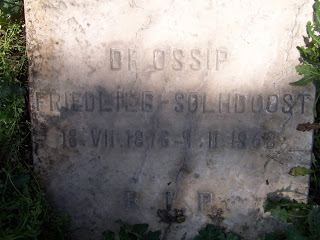
What we do know is that:
- Raissa (nee Kiiakinine) Friedlieb-Solhdoost passed away 3 March 1956 in Iran and is buried in the Doulab Catholic Cemetery in Teheran
- Ossip Friedlieb-Solhdoost passed away 9 February 1968 in Iran and is buried in the same cemetery.
- Galina (nee Friedlieb) Mostofi passed away 16 April 1961 in Iran. Galina had married one Hassan A. Mostofi (later a resident of Baden-Baden, Germany) and had at least one son – Djahan Mostofi who currently lives in the United States.
- Anna (Solhdoost) Cade became a naturalised Briton in 1952 and passed away in 1981 in Manchester
There is no record of Marian Friedlieb-Solhdoost. The most interesting character is Kira Friedlieb-Solhdoost. Kira had studied at the Columbia University-Presbyterian Hospital, School of Nursing in 1937. Kira became a naturalised Briton in 1953 and joined a Roman Catholic religious order in England – the Congregation of Our Lady of the Retreat in the Cenacle. She was later quoted as saying that she “chose to join the Congregation of the Cenacle because she felt its ministry came closest to that of the priesthood”. She appears to have been a bit of a rebel and fervently campaigned for the equality of women in the Catholic Church… particularly for women’s ordination. To further that cause, she served as the UK president of St. Joan’s International Alliance which campaigned for equality in the Church. Kira passed away 1 July 2005 in Manchester at the age of 92.
Ossip Friedlieb Khan Solhdoost seems to have been a legitimate banker and businessman and I haven’t found anything detrimental against him. Whatever his association with Wolpe had been in regards to the Russische-Deutsche Bank, it doesn’t seem to have tarnished his reputation.
Baron Arthur von Kleist
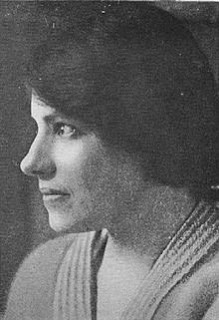
(from Wikipedia)
This co-founder of the Russian-German Bank was likely Arthur Eduard Gustav Viktor Ewald von Kleist, born 1873 in Kelm, Lithuania. In 1901 von Kleist married Marie Wilhelmine Elise von Grotthuß in Riga and the couple had two daughters (1902 and 1905). Von Kleist was a lawyer and served as an associate judge for the government in Riga and in 1905 became head of the administration of a district in Russia.
In 1917, the family fled the Russian Revolution, first to Kurland (west of Riga) and, in 1919, to Berlin. In 1922, Baron von Kleist gained some notoreity by taking in Anna Anderson, a young woman who some believed was the Grand Duchess Anastasia of Russia. Kleist passed away in 1928 in Berlin at the age of 55.
Anna Anderson was later proved to be an imposter, no relation to the Romanovs and actually a Polish woman named Franziska Schanzkowska.
Kleist’s wife moved into a home for the elderly in Lichterfelde which was heavily bombed in 1944. Much distressed and confused, Kleist’s wife was diagnosed as a restless geriatric and, on 21 June 1944, euthanized by the Nazis.
Conclusion
Johann Hans Wolpe seems to have been quite the character. His supposed involvement with Ziebell and Lincoln Allen Smith in the Irish naturalisation scheme doesn’t really surprise me. Wolpe seems to have been involved in a number of shady and questionable financial ventures. The counterfeit shares fiasco in 1935 apparently involved the son of the former Costa Rican consul in Holland… who was dealing in false passports.
I had wondered if Wolpe might have had a connection with the Abwehr but… nothing has to come to light to support this, beyond a few weak, but tantalizing connections such as his relationship with the Rhodius Koenigs Handel Maatschap banking company. Until more information comes to light… it will just have to remain an intriguing possibility.
Acknowledgements
Many thanks to Frank van Lamoen, assistant curator at the Stedelijk Museum Amsterdam for pointing me in the right direction with the Delpher newspaper archives!
Sources
Doulab Catholic Cemetery – headstone pics for Raissa, Ossip and Galina
Stolpersteine – story of Baron Arthur von Kleist’s wife and her fate under the Nazis
Catholic Herald – article about Kira Solhdoost
Delpher – Dutch newspaper archives
Ancestry – genealogy resources
Vorwärts – newspaper archive on the Friedrich-Ebert Stiftung site
Freunde Historische Wertpapiere – has info on Depositen und Handelsbank A.G.
